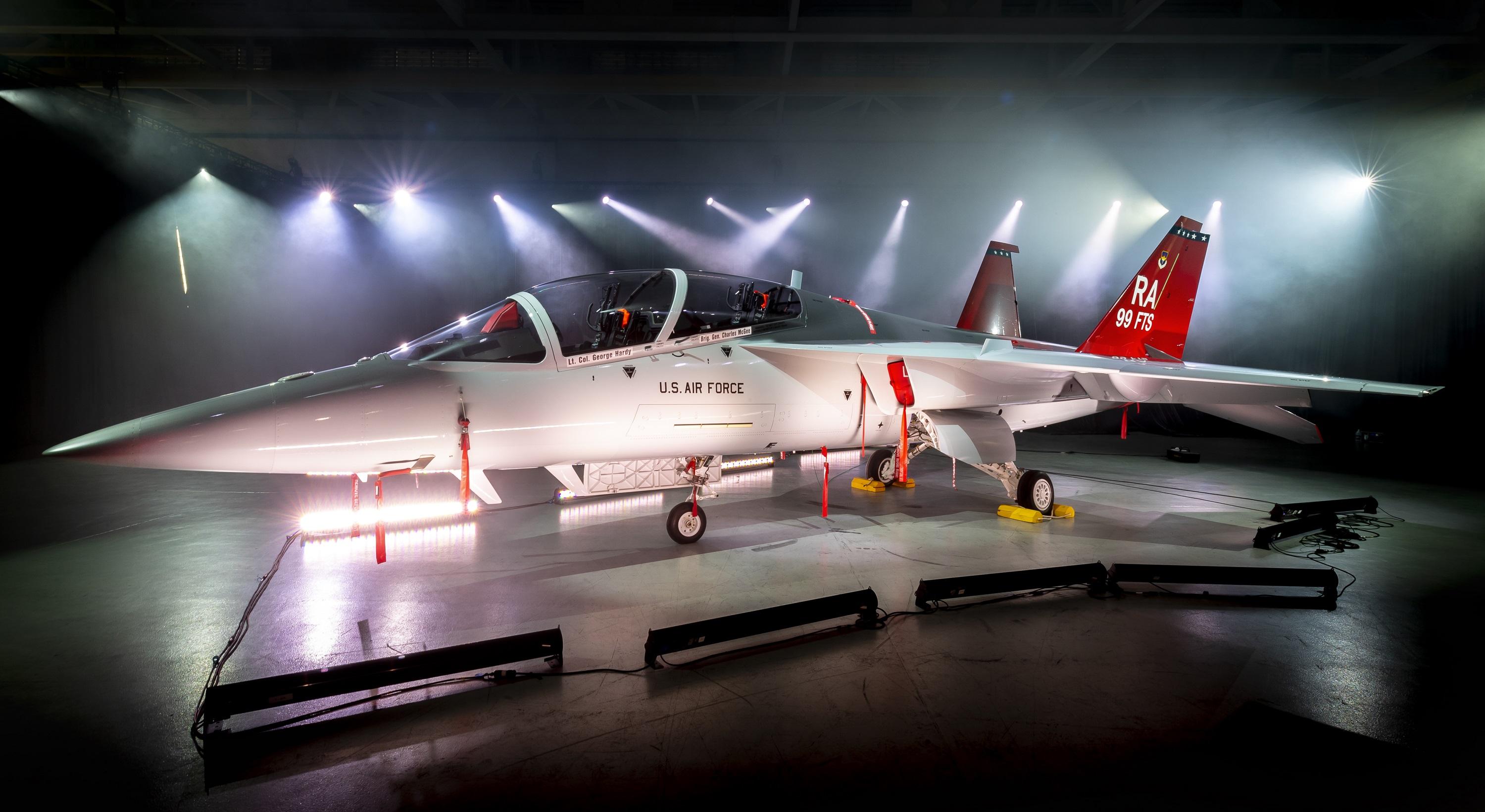
Boeing on April 28 unveiled the first T-7A Red Hawk trainer for the U.S. Air Force, though the aircraft will remain at the company’s St. Louis facility for more ground and flight tests before being handed over to the service.
The first T-7A was painted in light gray with the jet’s signature red tail—a nod to the Tuskegee Airmen’s red-tailed aircraft in World War II—with the RA 99 FTS tail code for the 99th Fighter Training Squadron at Randolph AFB, Texas.
“Like the Airmen they were named and painted to pay homage to, the T-7A Red Hawks break down the barriers of flight,” Air Force Chief of Staff Gen. Charles Q. Brown Jr. said in an announcement. “These digitally engineered aircraft will make it possible for a diverse cross section of future fighter and bomber pilots to be trained, and provide an advanced training system and capabilities that will meet the demands of today’s and tomorrow’s national security environment.”
Boeing builds the trainer at its St. Louis facility, with the aft section built by Saab in Linkoping, Sweden. Saab will move production of that section to a production facility in Indiana.
The rollout was pushed back due to production delays, which Boeing said were connected to COVID-19 pandemic issues. Overall the T-7’s schedule has been delayed about seven months. The company says it can gain back some of that time with shortages receding as testing continues. Boeing also said last year it had fixed a wing rock issue that was identified during testing.
A Milestone C production decision is now expected in late 2023, with initial operational capability targeted for 2024. The first low-rate initial production deliveries are expected in October 2024.
On April 27, Boeing announced a $367 million charge on the T-7A program linked to supply chain constraints, COVID-19 impacts and inflation pressures.
“We continue to have high confidence in the long runway ahead for the T-7A program,” Boeing CEO Dave Calhoun said in an earnings call. “Similar pressures impacted other fixed-price development programs, though to a lesser extent. From a cash perspective, these charges will be incurred over the next several years.”
The Air Force in its fiscal 2023 budget request calls for $10.5 million in advance procurement for the trainer, with that spending to jump to $321.9 million in 2024 as it plans to procure 14 of the jets. Spending would then rise to $489.2 million in 2025 for 21 aircraft, $557 million in 2026 for 23 and $892 million in 2027 for 36.
